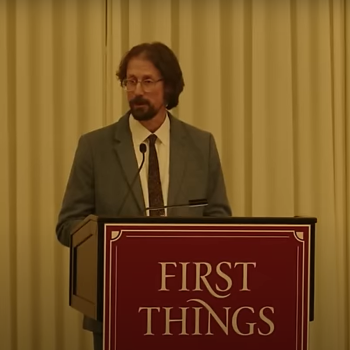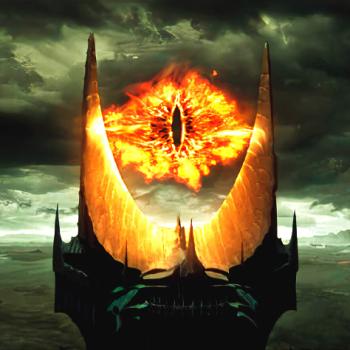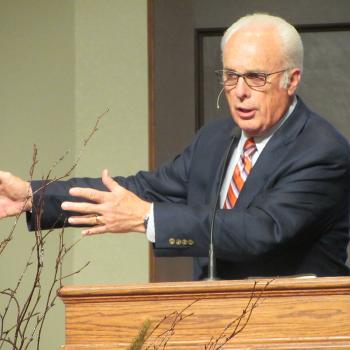
I can picture the scene vividly. The place is the Domus Sanctae Marthae. The time is the morning of June 20, 2013. The Domus is pulsing with activity, voices rising and falling, feet coming and going on the lobby’s marbled floor. Gathered together from the world’s four corners, the Church’s apostolic nuncios have converged on this point in space-time. Tomorrow the pope will address them as one.
A man enters the hall. He has flown in from Washington, weary with jetlag. He is Carlo Maria Vigano, Nuncio to the United States. As soon as he enters, he meets a man in a cardinal’s red-trimmed cassock.
Vigano knows the man well. He is a force, a kingmaker, a power in the land. He shakes the boughs and money falls into his hands, like ripe apples. He is Cardinal Theodore McCarrick, former Archbishop of Washington. They say he prefers his lovers tall and slim, intelligent, no smokers.
Vigano knows. For years, he has known, and tried to warn others. For years, he has tried, and for years he has failed. Still, he greets the Cardinal with respect.
The Cardinal does not greet him in reply. Instead, he says, “The Pope received me yesterday. Tomorrow, I am going to China.” There is something like triumph in his voice, in his eyes, playing at the corners of his mouth.
At first, Vigano did not fully grasp what this meant. Nor did he grasp what it meant when he stood in line to meet the pope himself the next day, and when at his turn Francis began aggressively chiding him about how the bishops in the US “must not be ideologized, they must be shepherds.” Nor did he understand why Francis asked him several days later in a private audience, “What is Cardinal McCarrick like?” and why he seemed not even to hear the answer.
Only in July did the last puzzle piece fall into place, when a friend reported an encounter with McCarrick at an event in El Paso. Drawing the man aside, McCarrick instructed him on the bishops to the US: “They must not be ideologized,” he said. “They must be shepherds,” he said.
In Villanova, in August, McCarrick spoke of his friendship with the man formerly known as Bergoglio in a taped lecture. He spoke of a meeting with “a very influential Italian gentleman” before Bergoglio became Francis. “He could do it, you know,” the gentleman said. “He could reform the church.” “I know you are a friend of Bergoglio,” McCarrick recalls the gentleman saying. “Well,” he quotes himself, inclining his head, “I hope I am.”
As I write, no comments are forthcoming from God’s vicar on earth. Meanwhile, anyone may read Vigano’s 11-page memo for themselves, copied in full here by Rod Dreher. It is long, and painful, and full of names. So many names, one loses track and has to re-read, to trace who knew what and when. I have read it twice. I still can’t remember them all, or keep them all straight. One does stand out: Secretary of State Cardinal Tarcisio Bertone, who systematically blocked information about McCarrick from reaching Pope Benedict’s desk. No wonder Benedict once pointed at his office door and said, “My authority ends there.” No wonder he couldn’t go on.
For all Christians, this news should bring sadness. For some, I fear it will bring more. It will bring devastation. It will bring the collapse of all they have trusted and believed. It will drive them away, not to another Church, but to no Church at all. For them, as Rome falls, so falls the Church.
I appreciate faithful Catholic voices like Bishop Barron, who are urging Catholics that now is the time to draw closer to the Catholic Church, not to abandon it. I appreciate their clarity of mind, their desire for truth, and their recognition that Christ is not the pope, nor the pope the Christ. Still, I understand why many will still despair, and why it will be difficult for other Catholics to argue them out of that despair. When you see the Church not as an armada, but as a single ship, and when that ship is going down in flames, where is one to go? Where is one to turn?
Some Protestants will see this as an occasion to tell you that they told you so. No doubt they are right. No doubt they did tell you so. But now is not the time to remind you of things you already know. So I will not remind you of the past. I will tell you of the present.
I will tell you of the priest at the drive thru, pulling around to park when the cashier asks him, “Do you do confessions? I haven’t been in many years…”
I will tell you of the pastor in a depressed Midwestern town, telling the druggies about Jesus.
I will tell you of the church in a Chinese basement, where grace is delivered on the tongue to a few dozen people: “Take. Eat.”
I will tell you of the church on an unremarkable street in London, where those who have fled unimaginable horrors gather to hear Syriac sung and Aramaic spoken.
I will tell you of the church in Jos, Nigeria, singing 19th-century hymns, praying “Deliver us from the hand of our enemies” as a sigh goes up around the room.
I will tell you of the church in the inner city, come together to bury their brother while the sad-eyed sisters sing: “Why should I feel discouraged? Why should the shadows come?”
I will tell you of the blood-washed band who lifts their voices with us, “but on another shore, and in a greater light.”
This is the fire that will not be quenched. This is the light that will not be quelled. This is the bride who looks to the bridegroom’s coming. Though men look on her with scornful wonder, though by schisms she is rent asunder, still she waits. At dawn, she looks to the east.
Behold the bride of Christ!
Behold the Christ!
Upon this rock, her hope is built.
Upon this rock, she stands.













